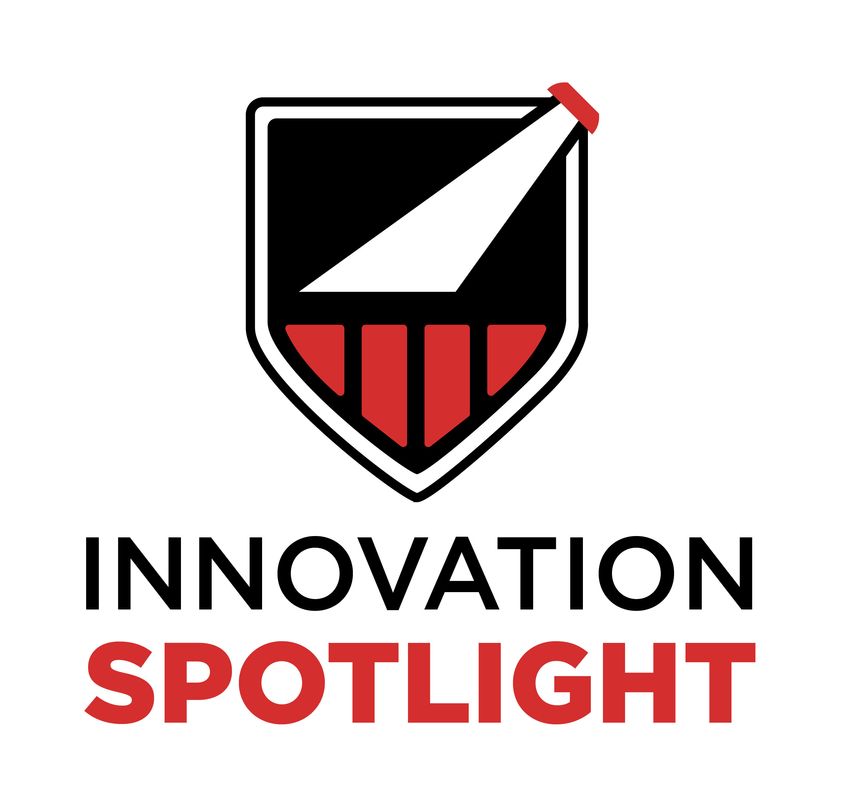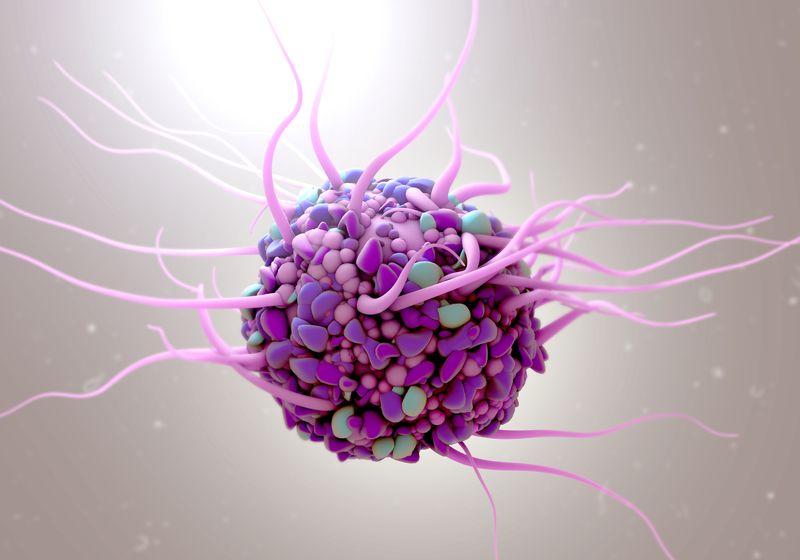Treating the brain cancer glioblastoma (GBM) demands more than conventional strategies due to a mix of factors including the cancer’s genetic complexity, invasive growth, and immune resistance. A new therapeutic approach against GBM involves engineered dendritic cells that mimic the immune response to viral intruders.
Jay Hartenbach President and Chief Operating Officer Diakonos Oncology
In this Innovation Spotlight, Jay Hartenbach, the president and chief operating officer of Diakonos Oncology, explains the company’s novel dendric cell cancer vaccine DOC1021, which has shown promising results in clinical trials. By “double-loading” patient-derived immune cells with patient-specific tumor mRNA and antigens, scientists have developed a personalized immunotherapy that activates a robust cytotoxic response.
Why is treating aggressive cancers such as GBM so formidable?
GBM combines four distinct challenges that collectively make it one of the most difficult indications to treat. First, invasion of GBM tumor cells throughout the surrounding brain tissue means that “complete” resections are rarely possible. Second, significant genetic diversity creates moving antigenic targets and can lead to resistance, often resulting in traditional approaches struggling to achieve long-term treatment success. Third, the blood-brain barrier often limits drug penetration. Finally, the brain tumor microenvironment is dominated by highly immune suppressive factors including myeloid cells that blunt T cell activity, while corticosteroids used to treat edema further dampen immune responses.
What do dendritic cells do, and what research inspired the development of DOC1021?
Dendritic cells are the body’s professional antigen-presenting cells and are considered the master regulators of adaptive immunity. They detect threats, process antigens, and ultimately activate a complete adaptive immune response against the perceived threat. They also control the tone, strength, character, and timbre of any downstream responses. Based on decades of research, our foundational idea is that properly educated dendritic cells provide the ideal immunotherapy modality for a complete and durable immune response against tumors.
Unfortunately, prior attempts with dendritic cells, starting with Dendreon’s Provenge, have yielded underwhelming results.1 Through discoveries made by Diakonos’ chief science officer, Will Decker, we have uncovered several previously unknown requirements for proper dendritic cell activation, resulting in cytotoxic Th1 immune responses that are significantly stronger than prior approaches.2 These discoveries, combined with nearly 20 years of preclinical validation, ultimately led to the development of DOC1021.
How does your dendritic cell vaccine fight glioblastoma?
DOC1021 starts with a sample of the patient’s tumor along with their monocytes collected through leukapheresis, which are then differentiated into dendritic cells ex vivo. The patient’s dendritic cells are proprietarily “double-loaded” with both tumor-derived protein antigens and tumor-derived mRNA. This dual loading results in a diverse antigenic repertoire presented on a dendritic cell’s MHC class I and class II molecules, effectively mimicking an active viral infection personalized to the patient’s tumor.
The dendritic cells are then administered proximal to the patient’s deep cervical lymph node chain to mimic the natural biology of a dendritic cell migrating to the nearest lymph node after an infection has been detected. The intent is to create a broad, polyclonal T cell response capable of navigating the brain parenchyma and ultimately targeting the tumor cells.
What exactly is “double loading” in DOC1021?
“Double-loading” refers to Diakonos’ first-in-class approach of loading nearly identical tumor antigens on both dendritic cell MHC class I and II molecules simultaneously to replicate active viral infection. This contrasts with prior dendritic cell therapy approaches that loaded tumor antigens only onto MHC class I or MHC class II.
Prior to Diakonos’ research, it was not known that dendritic cells compare the peptide amino acid sequence of antigens bound to MHC class I and II. Based on our research, we now understand that not only do dendritic cells compare antigens loaded onto MHC class I and class II, but having matching antigens on both is an essential part of activating a powerful Th1 immune response through differentiation into a dendritic cell type known as a cDC1.3
How does this approach differ from other immunotherapies in development?
Checkpoint inhibitors release the brakes, but they only work when there has already been a strong anti-tumor immune response that has become quiescent, which is often not the case in GBM. CAR T cells can be powerful in treating blood cancers, but solid tumors such as GBM present physical barriers, immunosuppressive environments, and appear to require the targeting of a significantly larger number of antigens than is currently possible with existing CAR T approaches. Peptide or neoantigen vaccines improve antigen-targeting breadth but rely on predictive modeling to determine which antigens should be targeted, which can result in targeting incorrect antigens. Peptide or mRNA tumor vaccines are also not administered in a way that would foster T cell reactivity within the brain parenchyma.

In a Phase 1 trial, DOC1021 showed potential to improve the twelve-month survival rate in glioblastoma patients.
©iStock, andresr
At its core, DOC1021 leverages years of innate immune system evolution to not only build a robust immune response but also identify the appropriate tumor antigens to target. While algorithms will continue to improve, our bodies already have the innate ability to identify the appropriate antigens, as we use these same pathways to fight off novel infections each day without targeting healthy tissue. DOC1021 has shown similar properties, with no detected off-target effects, and the only adverse events seen in trials are tied to short-lived, powerful immune responses.
What was the setup for your Phase 1 clinical experience, and what were the most significant observations?
The study prioritized safety, integration with standard of care procedures, and characterization of immune engagement in adults with glioblastoma. Manufacturing was reliable across patients, dosing was completed in the outpatient setting, and the therapy was extremely well tolerated. Although the study was not designed or powered for efficacy, we observed an encouraging survival signal, including an estimated twelve-month overall survival of 88 percent compared to approximately 60 percent expected for standard of care treatment. Additionally, several patients are now categorized as long-term survivors in a disease that typically only sees three to five percent long-term survivors. In an expanded access program at the conclusion of the Phase 1 study, we treated an additional 7 patients, all of whom are currently still alive.
Were there any findings that shaped your thinking going forward?
Yes, absolutely. One critical finding was tied to the powerful immune response generated by DOC1021, which resulted in some patients being misdiagnosed as showing cancer progression when they were actually experiencing an immune response, referred to clinically as pseudo-progression. This led to some patients being reoperated on prematurely or receiving additional radiotherapy, thereby neutralizing the DOC1021-initiated immune response. Several patients who demonstrated similar activity but were not reoperated on ultimately saw complete resolution and are still alive today exceeding expected survival.4
In our Phase 2 trial, we are now much clearer that study sites should observe patients demonstrating signs of cancer progression but not experiencing clinical decline, especially in the first six months, rather than undergoing reoperation.
What does the future hold for this class of immunotherapy?
In the near term, our focus is on executing clinical trials and scaling DOC1021 manufacturing. In March, we initiated the Phase 2 study in GBM across leading US centers. In parallel, we are advancing a Phase 1 pancreatic ductal adenocarcinoma study that is very encouraging though early results, and we will start a Phase 1 refractory melanoma study by the end of the year.
To complement the ongoing clinical development work, we have been working with our contract development and manufacturing organization partner, Cellipont Bioservices, to scale our manufacturing as we continue to advance clinical trials. By the end of the year, we hope to have automated a significant portion of DOC1021’s manufacturing, which will not only increase manufacturing capacity but also reduce costs.


